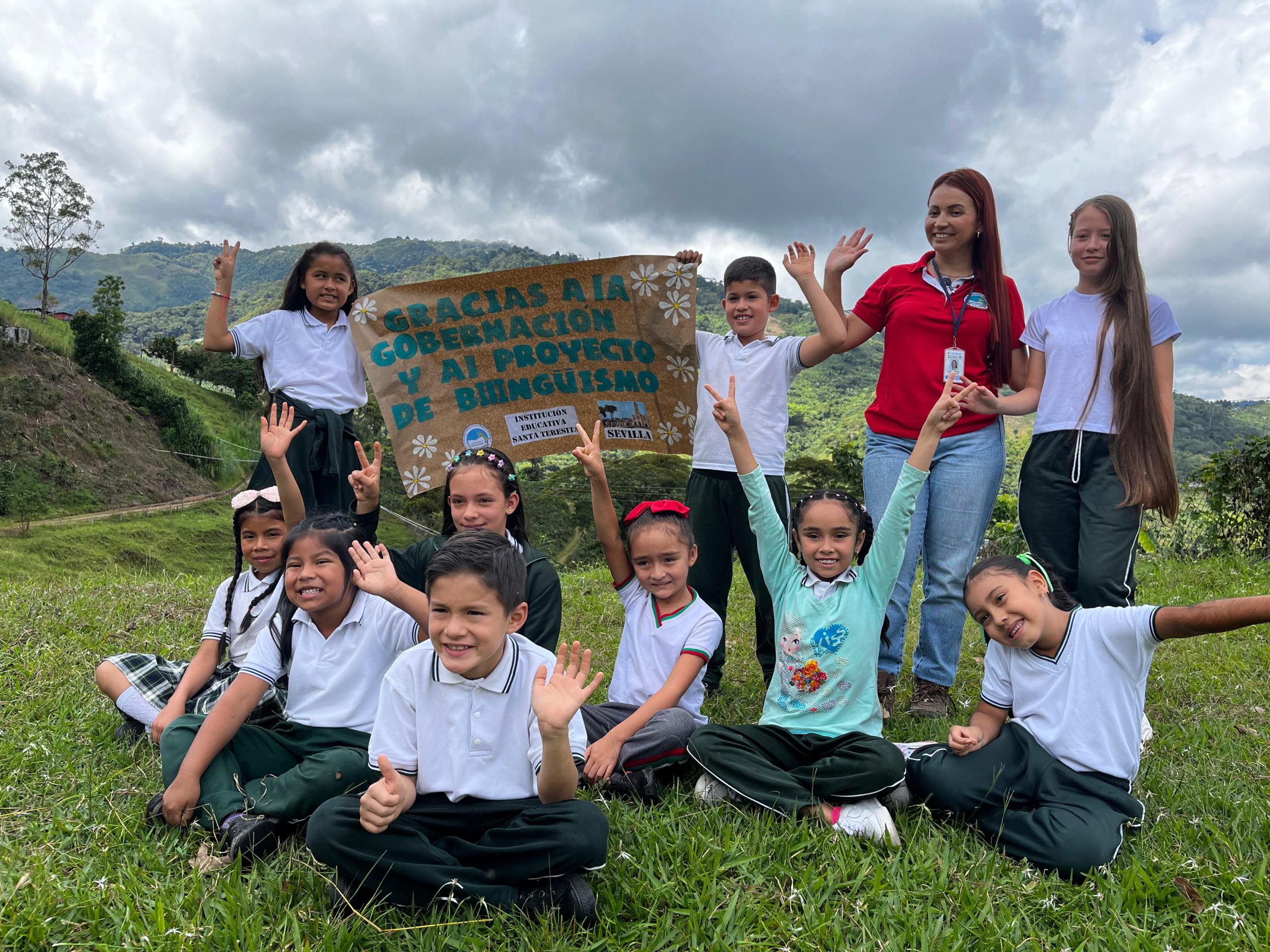Santiago de Cali, August 18, 2024. Regardless of the weather conditions, the difficulties on the road and the distance, teacher Karla Viviana Chocué arrives punctually to the Santa Teresita Educational Institution, in the town of San Antonio, in Seville, where her students wait for her to listen and speak in their English classes.
Boys and girls from different grades in primary school meet in the classroom where yellow, blue and good morning become common words that this teacher shares every day, applying the knowledge she gained from her immersion in London, where she went as part of the program of the Governorate of Valle del Cauca to strengthen the skills of teachers for teaching the second language. Along with her, 296 teachers have benefited from this initiative to consolidate the department as a bilingual territory.
For the students, the classes are the best part. “I think it is very important because you can learn more languages, because with one language you can learn others and with that you can go to another country,” says Reichel, while Luisa María agrees that learning English will allow her to “learn many new things like colors and animals.”
The proud teacher Karla assures that overcoming any difficulty to get to San Antonio is well worth it, “seeing the smiling faces of the children comforts me. I am a primary school teacher and I am not bilingual, so when the Government of Valle del Cauca launched the bilingualism project to strengthen the English skills of many teachers, I joined. There was a national immersion and an international one in which 48 teachers participated and traveled to London. This immersion was able to transform my way of teaching English.”
Thus, their classes became dynamic sessions that included songs, videos, images and games, and the impact is felt in the lives of these students, among whom there are indigenous communities and the children of farmers.
“Sometimes one thinks that because the area is so far away there is no possibility for our children to learn a second language, but with this project and the ease with which the teacher can be trained and transmit that to the students, well for me as a parent it is a huge happiness and for the children as well because they learn this second language that is important,” said Marvi Orozco, mother of a family.
The principal of the Santa Teresita Educational Institution, Diego Fernando Camacho, added that “the scope of these initiatives, especially for rural areas, is spectacular. Being able to reach our children, children from the countryside and in such remote areas, changes the perception that our communities have, changes the perception that our children have of what bilingualism is and brings them closer to that global education.”
In this way, the Valle del Cauca Governorate closes gaps and is committed to guaranteeing quality education and opportunities even in the most remote places of the department.


